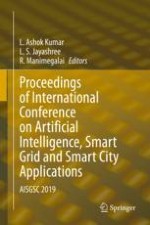2020 | OriginalPaper | Buchkapitel
55. Fake Product Review Detection and Removal Using Opinion Mining Through Machine Learning
verfasst von : Minu Susan Jacob, Selvi Rajendran, V. Michael Mario, Kavali Tejasri Sai, D. Logesh
Erschienen in: Proceedings of International Conference on Artificial Intelligence, Smart Grid and Smart City Applications
Aktivieren Sie unsere intelligente Suche, um passende Fachinhalte oder Patente zu finden.
Wählen Sie Textabschnitte aus um mit Künstlicher Intelligenz passenden Patente zu finden. powered by
Markieren Sie Textabschnitte, um KI-gestützt weitere passende Inhalte zu finden. powered by
